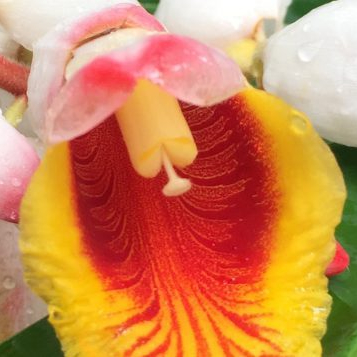
Mustard (top) and collard greens.
Greens
In Florida, hardy collards thrive under a wide range of conditions and can easily be grown throughout most of the year. They’re one of the few greens that can make it through the hot weather and can be planted in the spring for a summer harvest — but they tend to bolt in hot weather and they will need lots of water. If grown in summer, harvest them before they bolt.
They’re more often often planted in the fall for a winter crop — they’re frost tolerant, and frost actually improves the flavor.
Collard greens grow as a loose bouquet instead of in a tight head like other cabbages. Unlike kale and mustard greens, they have a very mild, almost smoky flavor. Smaller leaves have a milder flavor and are often more tender than larger leaves.
Classification
Alternate names
Latin name
Family
cabbage
Related species
Cultivars
Characteristics
- edible
- edible leaves
- cold-season crop
- summer crop
- heat tolerant
- cold tolerant
- frost tolerant
- low maintenance
- full sun
- fertile moist soil
Description
Size
Color
Blooming season
Fruiting season
Lifespan
Natural environment
Uses
- Nutrition: Collard greens are low in calories and fat, are cholesterol-free and provide an array of important nutrients such as vitamins A, C and K, as well as folate, calcium and fiber.Per 1/2 cup cooked greens — Calories: 10; Total Fat: 0 g; Saturated Fat: 0 g; Total Carbohydrates: 1 g; Protein: 2 g; Sodium: 11 mg
- Storing: Wash freshly harvested leaves well to remove all grit, and then cool them immediately in the refrigerator. They can be stored in a plastic bag in the fridge for up to 5 days. They’re best when cooked within a day or two of harvest.
- Cooking
- Chop your greens and boil them in a pot. Save the nutritious cooking liquid for dipping your cornbread.
- Collard greens are traditionally slow-cooked with pork or turkey but can also be quickly cooked like cabbage.
- Collard greens may require 20 minutes to an hour of cooking depending on their maturity (toughness). You can tell that they are done when they turn bright green.
- Collard greens can be steamed, boiled, braised or sautéed.
- It’s important to not overcook collard greens. Like other cruciferous vegetables, collard greens will emit an unpleasant sulfur smell when overcooked.
- The ribs are very tough and are usually removed. The leaves tend to be slightly tough as well and they take more cooking than most greens.
- Add thinned seedlings in salads or coleslaw.
Planting and Growing
Requirements
Hardiness zone
Sun
full
Water
Soil
moist, fertile
Salt tolerance
Cold/heat hardiness
frost tolerant
Planting
When to plant
Collard greens are often planted in late summer to early autumn for winter harvest in the south.
How to plant
Start in seed flats and transplant.
The best collard greens growing environment is one with moist, fertile soil. The area chosen for collard greens planting should be in full sun. Plant seeds in rows at least 3 feet apart, as growing collard greens get large and need room to grow. Thin seedlings to 18 inches apart for adequate room in the rows.
Propagation
Maintenance
Harvesting
While 60 to 75 days is an average harvest time for growing collard greens to reach maturity, the leaves can be picked at any time. Harvest collards by taking the larger leaves from the bottom of the plant, allowing the smaller ones at the top more time to grow.
Summer collard greens will bolt. Harvest before bolting.
The stalks are inedible.
Diseases/Pests
Pests of growing collard greens are similar to those of other members of the cabbage family. Aphids may congregate on new succulent growth and cabbage loopers may eat holes in the leaves. If aphids are spotted, keep an eye on the underside of the leaves of collard greens.
Cautions
Landscape Planning
Notes from the Jungle
Ownership
Placement around the house
We don’t have the right soil for collard greens, since we have the usual sandy stuff that composes most of coastal FL. Consider growing in large containers in the front or in the cut-out, although they might be too big. Eventually we will want to create raised amended beds for vegetables. They might be willing to grow on the north side in the summer.
Links
University of Florida Gardening Solutions: Greens
FL Dept of Agriculture and Consumer Services: Collard Greens
